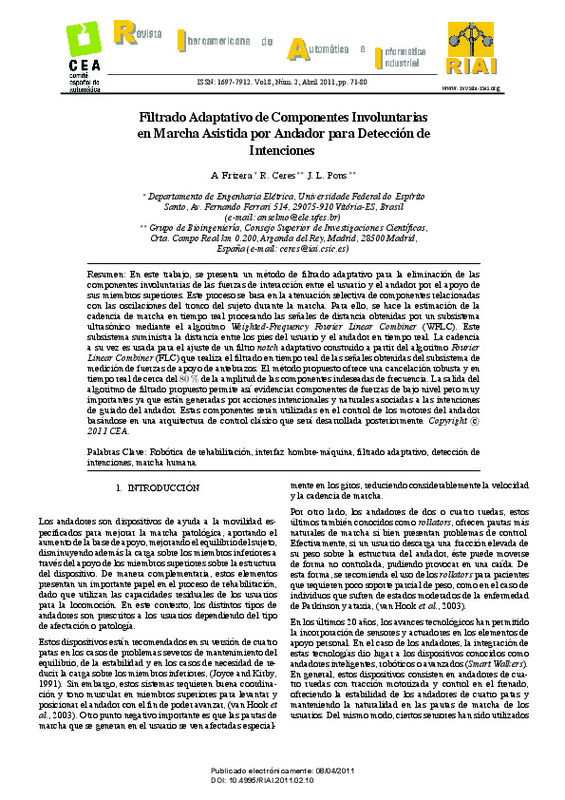JavaScript is disabled for your browser. Some features of this site may not work without it.
Buscar en RiuNet
Listar
Mi cuenta
Estadísticas
Ayuda RiuNet
Admin. UPV
Filtrado Adaptativo de Componentes Involuntarias en Marcha Asistida por Andador para Detección de Intenciones
Mostrar el registro completo del ítem
Frizera, A.; Ceres, R.; Pons, JL. (2011). Filtrado Adaptativo de Componentes Involuntarias en Marcha Asistida por Andador para Detección de Intenciones. Revista Iberoamericana de Automática e Informática industrial. 8(2):71-80. https://doi.org/10.1016/S1697-7912(11)70028-0
Por favor, use este identificador para citar o enlazar este ítem: http://hdl.handle.net/10251/144526
Ficheros en el ítem
Metadatos del ítem
| Título: | Filtrado Adaptativo de Componentes Involuntarias en Marcha Asistida por Andador para Detección de Intenciones | |
| Otro titulo: |
|
|
| Autor: | Frizera, A. Ceres, R. Pons, J. L. | |
| Fecha difusión: |
|
|
| Resumen: |
[EN] The advances in technology have allowed the use of sensors, processors and actuators in the context of the mobility assistive devices for disabled people, improving their usability and safety. Considering walkers, the ...[+]
[ES] En este trabajo, se presenta un método de filtrado adaptativo para la eliminación de las componentes involuntarias de las fuerzas de interacción entre el usuario y el andador por el apoyo de sus miembros superiores. ...[+]
|
|
| Palabras clave: |
|
|
| Derechos de uso: | Reconocimiento - No comercial - Sin obra derivada (by-nc-nd) | |
| Fuente: |
|
|
| DOI: |
|
|
| Editorial: |
|
|
| Versión del editor: | https://doi.org/10.1016/S1697-7912(11)70028-0 | |
| Código del Proyecto: |
|
|
| Agradecimientos: |
|
|
| Tipo: |
|








